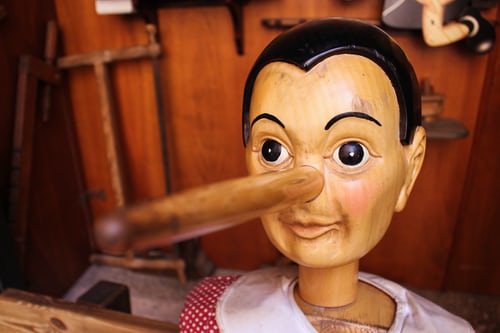Inspiring Young Readers
 posted on 08 May 2019
posted on 08 May 2019
The Adventures of Pinocchio by Carlo Collodi
If, like me, you’ve watched and loved the Disney animation of Pinocchio and you’ve assumed you know the story well enough – think again. Having finally got around to reading the original story – one of the most translated books in history – I have been astonished at just how different the two creations are. Disney’s is a wonderful piece of work but it would be more accurate to say that it’s a story based on The Adventures of Pinocchio rather than a faithful reproduction of the original.
Collodi – real name Carlo Lorenzini – started his children’s story in 1881 as a weekly episode written for Giornale per i bambini and had originally planned only 15 instalments or chapters. However, the popularity of the story forced him to revive the story and add another 15 to that total. A collected, single edition was published in 1883 and immediately became an extraordinary best-seller and has never been out of print since.
The idea of books explicitly aimed at children was still a relatively new idea when Collodi published and much of the content might strike a modern reader as brutal and unsentimental – especially compared with the cosiness of the Disney world-view. But, as was common in the late 19th century, the stories are essentially didactic and meant to emphasise a morality lesson for the reader and boys in particular would have been expected to see the chapters as teaching a lesson that would help guide them as they grew up.
The structure of the book is pretty much determined by the weekly serialisation – each chapter sees Pinocchio engaged in a new adventure and can be seen as almost free-standing despite the way Collodi gives the puppet a back story that builds as each episode is added. The collective effect is of a morality tale in which the wooden puppet can only become a real boy when he has learned enough life lessons to make him human. Collodi is exploring the whole notion of what it means to be a child, especially a boy child, and what they need to learn in order to be considered ‘adult’.
From the outset Pinocchio is essentially a naughty child who is unwilling to learn his life lessons and the result is always disastrous. He disappoints his ‘father’, Geppetto, the man who carved him, repeatedly runs away or strays from home but always returns there to solve his problems. The biggest message here is about the importance of education – Geppetto makes desperate sacrifices to send Pinocchio to school but his efforts always are always falling on stony ground. Pinocchio is careless, selfish and greedy and he’s easily led despite the advice of his elders. The consequences for him are often harsh as a result: he burns off his feet, he’s tricked of his money by so-called friends, he’s hung, he gets turned into an ass, he’s swallowed by a huge fish. His path is a long and difficult one before he earns the right to become human.
In the first half of the book Pinocchio depends on a father figure in Geppetto but Collodi changes the focus for the second half making The Fairy With Azure Hair the puppets mentor and mother-figure. It will be Fairy who eventually grants Pinocchio’s deepest wish.
Before this resolution there will be some shocks along the way for devotees of the Disney Pinocchio. The cricket that gives Pinocchio advice early in the book (sorry he’s not called Jiminey here) is soon dealt with by the puppet who kills him with a hammer and, to add to the general barbarity, he bites off the paw of the cat who tries to rob him. The nose only grows on a couple of occasions but, distressingly, it grows so long it has to be chiselled off!
I have no idea how the story would now work for a modern child reader – especially one who has seen the rather endearing Pinocchio of the Disney version. It’s pointless making comparisons between the two versions – they are both excellent in their very different ways. All I can say is that it’s well worth taking some time to read Collodi’s original because it’s a fascinating and rich experience.
Terry Potter
May 2019
(Image: Jametlene Reskp)